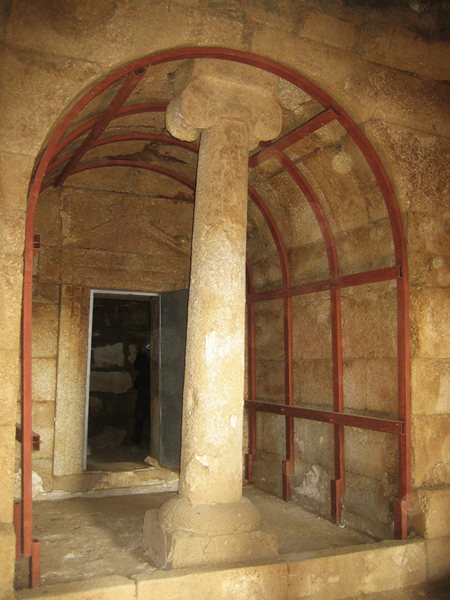Der Schmarotzer написа:А от къде си сигурен, че тази технология е българо-иранска, а не е част от римската такава, защото такива строежи са известни по цялата Римска империя не само в днешна Северна България (knigi.bim.bg/rimski-i-rannovizantiiski-selishta-v-bulgariia-%E2%80%93-tom-ii%D1%96-18720.html). Достатъчно е да се напише в Google късноримски градове и ще се видят основите с квадри на доста от градовете, някои от които са доста далеч от Добруджа. Ето например в Рациария: http://www.zvuk-i-svetlina.eu/br08_2012 ... inata.html, в Деултум: https://www.google.bg/search? сигурно и тук са траки:franks-travelbox.com/grossbritannienvereinigteskoenigreich/hadrianswall.html; а тук има едни строежи, преди Христа, сигурно са били гетски:antikefan.de/staetten/italien/sizilien/syracus/syracus.html; а тук римските терми в южна Италия: 4teachers.de/?action=keywordsearch&searchtype=images&searchstring=r%C3%B6misch; я виж и този римски театър от Регина: de.hospederiasdeextremadura.es/hotel/hospederia-mirador-de-llerena/lugares-de-interes/roemisches-theater-regina-und-arabische-festu , там май пак е строено от гетите ти. Вземи малко се поограмоти кога възниква и какво е разпространението на този тип строежи...
Явно английският ти наистина не е добър, защото в статията пише всичко нужно за племената минали покрай Силистра - Още за етническия облик на Силистра виж С. Ангелова, Етническият състав на населението в ранновизантийския Доростол 5-6 век. - Studia Archaeologica. Supplementum 3. София, 2003, 245-251.
Аз да съм сигурен
Великите градежи в Плиска изградени без аналог с повтаряща се поредица от бял мрамор и 4 реда тухли, може да се види в половин България далеч преди да са се появили уно-буно-чокундурите




Кога възниква тоя тип строежи



Хе,хе, аз не съм разбирал
"From the late fourth century onwards we observe a gradual barbarization of the inhabitants of the provinces of Moesia Inferior and Scythia Minor. Scyri, Sadagari and Alans had already settled there by the mid-fifth century. The process intensified greatly during the sixth and seventh centuries due to ceaseless invasions of Slavs, and later of Avars.For the first time Slavs under the name of Getae came along the Lower Danube in the days of Emperor Anastasius. They appeared under their proper name Anti in Emperor Justin’s reign (518-527). One of the mightiest raids of the Slavs dates from 540, terminating in a treaty between the Anti and Emperor Justinian (527-565), accord-ing to which they would be settled as foederates. Yet the Slavs’ invasion continued.In 578 the Byzantines transferred at Durostorum an Avar army of 60,000 men against the Slavonic settlements along the left bank of the Danube. The latest coins from a hoard of follisi were struck in 574; the hoard was found by accident to the south of the early Byzantine fortress. A coin struck in 568-569 was discovered in the north-western sector of this fortress within a burnt layer. These coins likely reflect one of the Slavs’ attacks not mentioned in the written sources. Theophylactos Symokathas reports on the Avars seizing Marcianopolis, Zaldapa, and Dorostol in 585."
Нужда от помощ с моя не добър английски
И пак да попитам, куде са хуните и българите, че не ги забелязвам